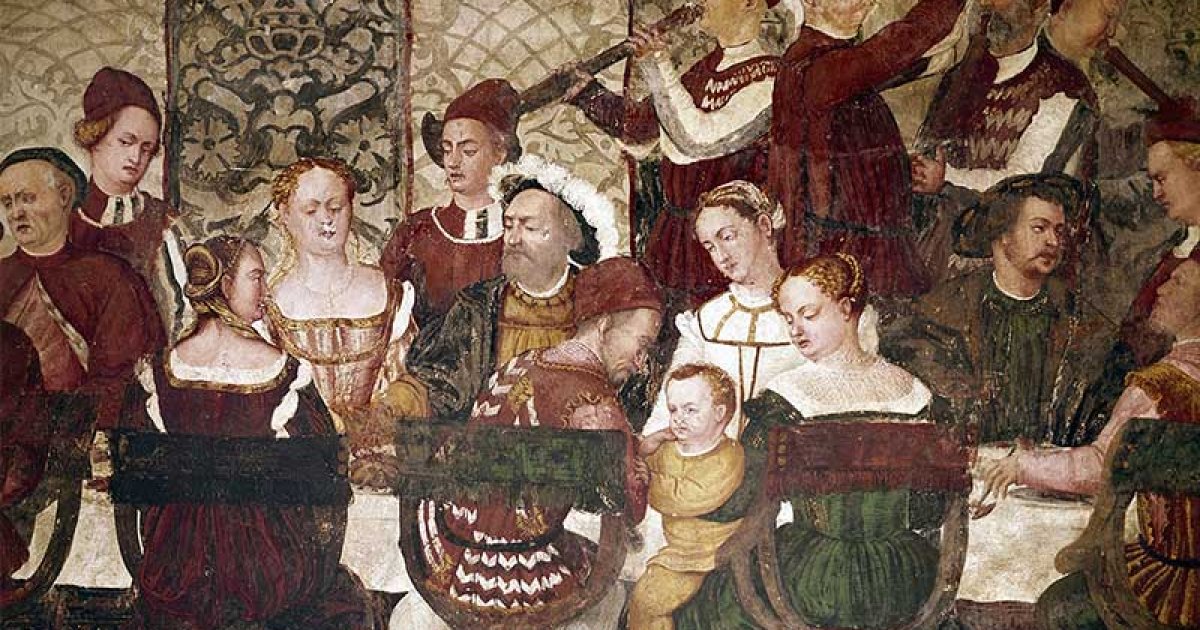BUONCONSIGLIO CASTLE, Castelvecchio Bishop's Hall
 Language: English / USA
Language: English / USA
The Sala dei Vescovi, or Bishops’ Hall, is the largest room in Castelvecchio, decorated with portraits of the prince-bishops on the walls. Depicted here are all the figures who ruled over Trento during the prince-bishopric, which lasted from just before the year 1000 until the beginning of the 19th century, at the time of Napoleon.
The final figure depicted in the cycle of frescoes is the last prince-bishop of Trento, Peter Michael Vigil von Thun und Hohenstein.
In addition to decorating the room, the frescoes in the Bishops’ Hall testify to the strong links that existed between the principality and the Holy Roman Empire: above the portrait of each bishop is another depicting the emperor in power at the time. The decoration of the Hall is also an explicit indication that the prince-bishops were faithful to the papacy, since the names of St. Peter’s successors are listed at the top of the walls.
Now press pause, and press play again when you reach the Venetian Loggia.
The Venetian Loggia is thus known because of the style of the arches that run along it, with an unmistakable pointed shape, but with the protruding edges typical of Venetian palaces. The elaborate decoration, featuring plants and flowers, provides further evidence of the building’s architectural links with Venice.
The visit to the Loggia is a marvelous experience, not just for the elegant Late Gothic style of the construction, but above all for the breath-taking views you have from between the slender pink stone columns. Three imposing towers stand out against the city’s skyline: the bell towers of the Cathedral and the Church of Santa Maria Maggiore, and the crenellated Civic Tower, next to Palazzo Pretorio.
An interesting fact: the story of Johannes Hinderbach, the bishop who had the Venetian Loggia built in the second half of the 15th century, is rather curious. Elected prince-bishop in Trento Cathedral in 1465, he had to wait four long years before taking up residence in Buonconsiglio Castle, despite being entitled to the privilege. This long wait was due to disputes with the Roman curia, which would have preferred the appointment of the Italian cardinal Francesco Gonzaga of Mantua instead of Hinderbach, who was of German origin.



